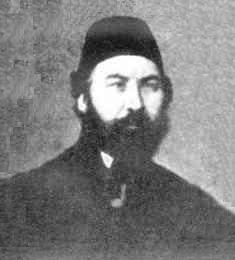Name Halil Pasha | Role Diplomat | |
 | ||
Died January 12, 1879, Istanbul, Turkey | ||
Halil Şerif Pasha (June 20, 1831 – January 12, 1879), formerly transliterated as Halil Sherif Pasha, was an Ottoman-Egyptian diplomat and art collector whose collection was described by Théophile Gautier as "the first ever to be formed by a child of Islam".
Contents
Name

For most of his life, Halil was known by the name Halil Bey. "Bey" was not a surname but rather a courtesy title recognized and sanctioned by the Ottoman government to designate a man as being the son of a Pasha. Halil used the title "Bey" as part of his name because his father Mehmed Şerif had attained the rank of Pasha. On August 10, 1871, Halil Bey was raised to the rank of Mushir (Field Marshal) by Sultan Abdülaziz (reigned 1861–1876). The rank of "Mushir" entitled Halil to use his father's name "Şerif", as well as the honorific title "Pasha", as parts of his name.
Life
Halil was born in Cairo, Egypt in the mansion of Muhammad Ali of Egypt. Halil's father, Mehmed Şerif Pasha (died February 13, 1865) had emigrated to Egypt from Kavala (in what is now northern Greece) to serve as a captain in Muhammad Ali's army, making a huge fortune in the process. Mehmed Şerif Pasha sent Halil, along with his brothers Ali Pasha Sherif (1834–1897) and Osman, to be educated at the École Militaire Égyptienne, an Egyptian military school that Muhammad Ali Pasha had set up in Paris in 1844. Halil took up his first official post in 1855 as Commissioner to the International Exhibition in Paris that year. He entered the Ottoman diplomatic service in 1856, serving as one of the plenipotentiaries negotiating the end to the Crimean War, and then as ambassador to Athens and Saint Petersburg, on which posts he began collecting art. He grew to dislike the cold of Saint Petersburg and so retired in a private capacity to Paris in the mid-1860s, renting expensive rooms from the English collector Lord Hertford on Rue Taitbout and becoming a noted gambler, art collector and patron.
He was introduced to Gustave Courbet by Sainte-Beuve, and commissioned Le Sommeil (The Sleepers) and L'Origine du monde from him. He also acquired Le Bain turc (The Turkish Bath) from Ingres and other works by Delacroix, Troyon, Daubigny, Meissonier, Corot, Rousseau and Gerome. Works known to have been owned by Halil Şerif Pasha include:
In January 1868 he sold off his art collection just before leaving to become Ottoman ambassador to Vienna, thus getting out of Paris only two years before the Franco-Prussian War. After the Vienna posting, he moved to Istanbul and married Princess Nazli Fazl, the daughter of a prominent reformer of the time, Mustafa Fazl Pasha. In 1877, he returned to Paris as Ottoman ambassador for a few months, but was dismissed from his post in September of that year. Halil Şerif Pasha died in Istanbul on January 12, 1879. Some sources record his death as being due to heatstroke while seated on a horse during Abdul Hamid II's accession parade. However, the accession parade was in August 1876.
